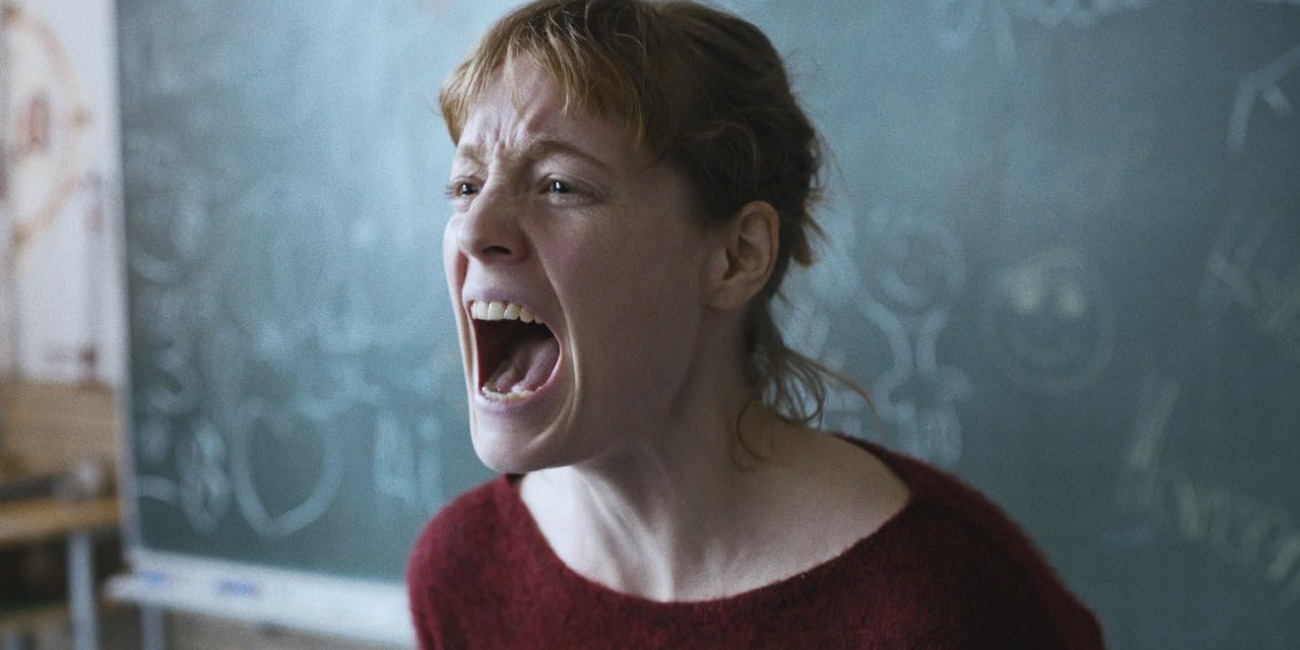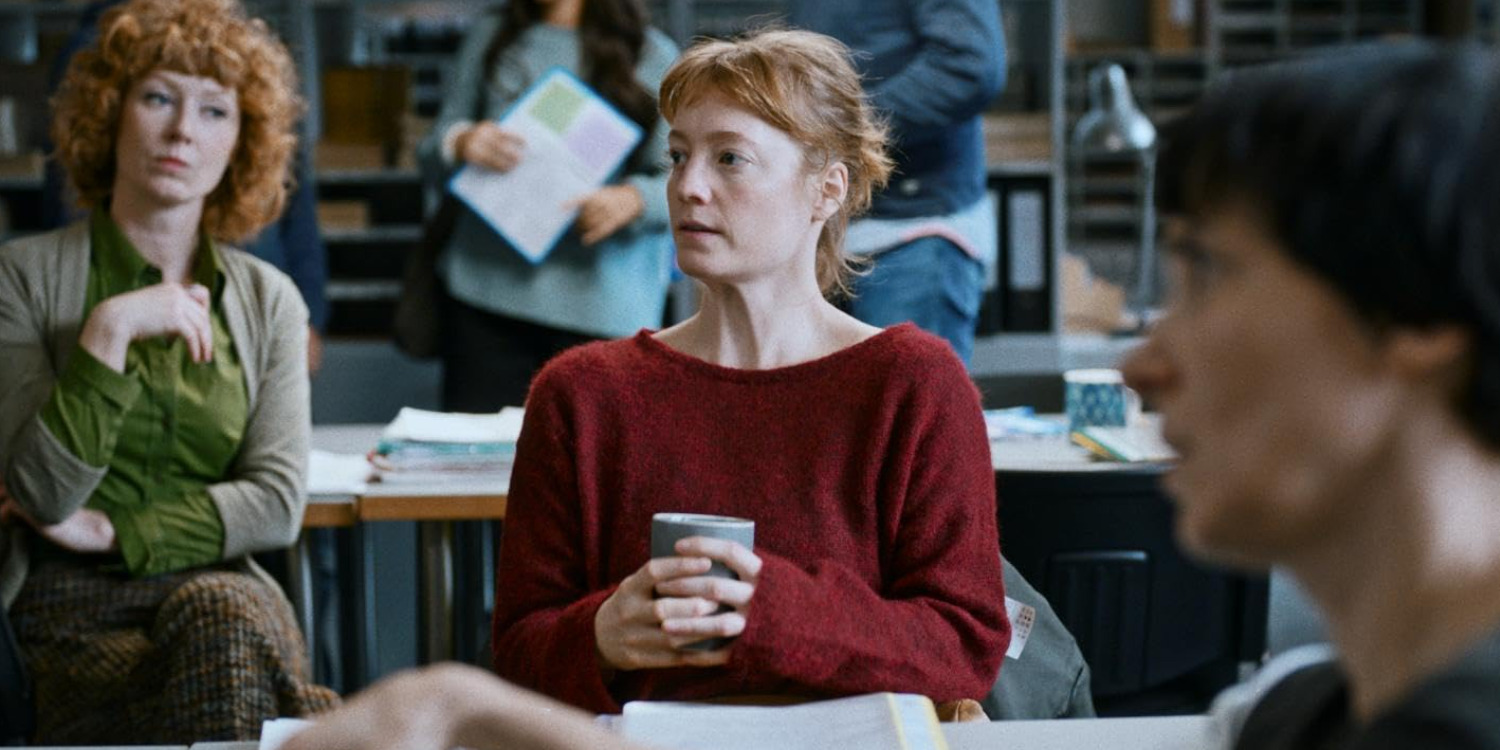The Oscar-nominated German film, ‘Das Lehrerzimmer,’ presents a cogently evocative narrative about society by equipping a secondary school’s ecosystem as the stage for its tale. Carla Nowak, a teacher best known for her idealistic approach to education, opposes the staff’s questionable ways of investigating a series of petty thefts occurring on the school premises. Therefore, after one of her students catches needless suspicion, she decides to solve the case herself. Yet, her hasty sleuthing only results in a significant disagreement. Thus, as a ripple effect takes hold, Carla’s world comes crashing down as the school’s precarious social dynamic breaks.
Even though the film takes place within the school almost in its entirety, it manages to convey an authentic understanding of tense social structures through a deceptively simple premise. Therefore, given the relatable and grounded nature of the story’s characters and narratives, one can’t help but wonder if the film’s origin has any connections to reality.
The Filmmakers Based The Teachers’ Lounge on Real-Life Experiences
In its entirety, ‘The Teachers’ Lounge’ employs a more fictitious narrative than factual, with characters and instances remaining a work of filmmakers Johannes Duncker and Ilker Çatak’s creativity. Even so, the filmmaking duo mined the base inspiration for the story from actual anecdotes from their real lives. Çatak and Duncker, who are friends in real life, attended the same school in Istanbul during their childhood. Their school had a similar problem of theft. While the kids were well aware of the thieves’ identity as two of their classmates, no one wanted to rat them out. Therefore, the thefts continued for some time.

In a conversation with AFrame, Çatak recounted the tale and said, “[But] At some point, the school found out, and they came into the class, and it was kind of a trap for them, where they said, girls — out. Boys — put your wallets on the table— and come to the front of the room. And they found all that money in their pockets. When we [Çatak and Duncker] talked about it later, Johannes and I thought it could be a good kickoff for a story.” Thus, the set-up for the film firmly emerges from the filmmakers’ real-life experiences during their school days.
Likewise, another real-life story presented the inspiration for Carla Nowak’s character. Duncker’s sister, a math teacher at a German school, saw an instance of theft unfolding at her institution similar to the one from the filmmakers’ childhood. Therefore, as they heard about a secretary’s involvement in the theft, the idea for the story furthered, bringing in the inclusion of complicated inter-staff dynamics. Ultimately, even though the details of the narrative diverge from both these real-life instances, the connection between them and the film remains. Consequently, ‘The Teachers’ Lounge’ becomes loosely based on these actual events.
A Versatile Allegory for Society
As Çatak and Duncker began developing ‘The Teachers’ Lounge,’ they quickly realized that the environment of their story’s school was becoming a microcosm for society. The student body, the hierarchical staff, and even the dubiously independent method of internal journalism present within a school’s natural environment mirrored real-life society’s social scale. Similarly, they observed how different schools from different parts of the world seem to reflect examples of society.

“There are schools that have surveillance, for instance, like in China,” Çatak shared, explaining the diversity found in the filmmakers’ research. “There are schools that are like the Scandinavian model, where the teachers want to be friends with the student body and have no hierarchies. And then there are schools who preach that law-and-order kind of speech, and they say, we have zero tolerance policies, blah, blah.” In ‘The Teachers’ Lounge,’ the school presents a social environment that allows for themes of privacy, truth-driven divide, and anti-authoritarianism to persist.
Thus, with all these elements, the film found fertile ground to chart a narrative that became a clear metaphor for society’s current overarching plights.” It’s so sad that our societies don’t actually talk to each other anymore,” said Çatak in a conversation with Hammer to Nail. “Everyone’s just trying to be right. And we were very aware of all of that going on in the world while we were writing this small little world.” Through complex depictions of characters who stand on different narrative ends, the film gets to hold up a nuanced mirror to society, leaving its intricacies open to interpretation. Still, its efforts to replicate a realistic social environment that feels authentic to a school while also reminiscent of reality remain undeniable.
Read More: Best German Movies on Netflix


You must be logged in to post a comment.